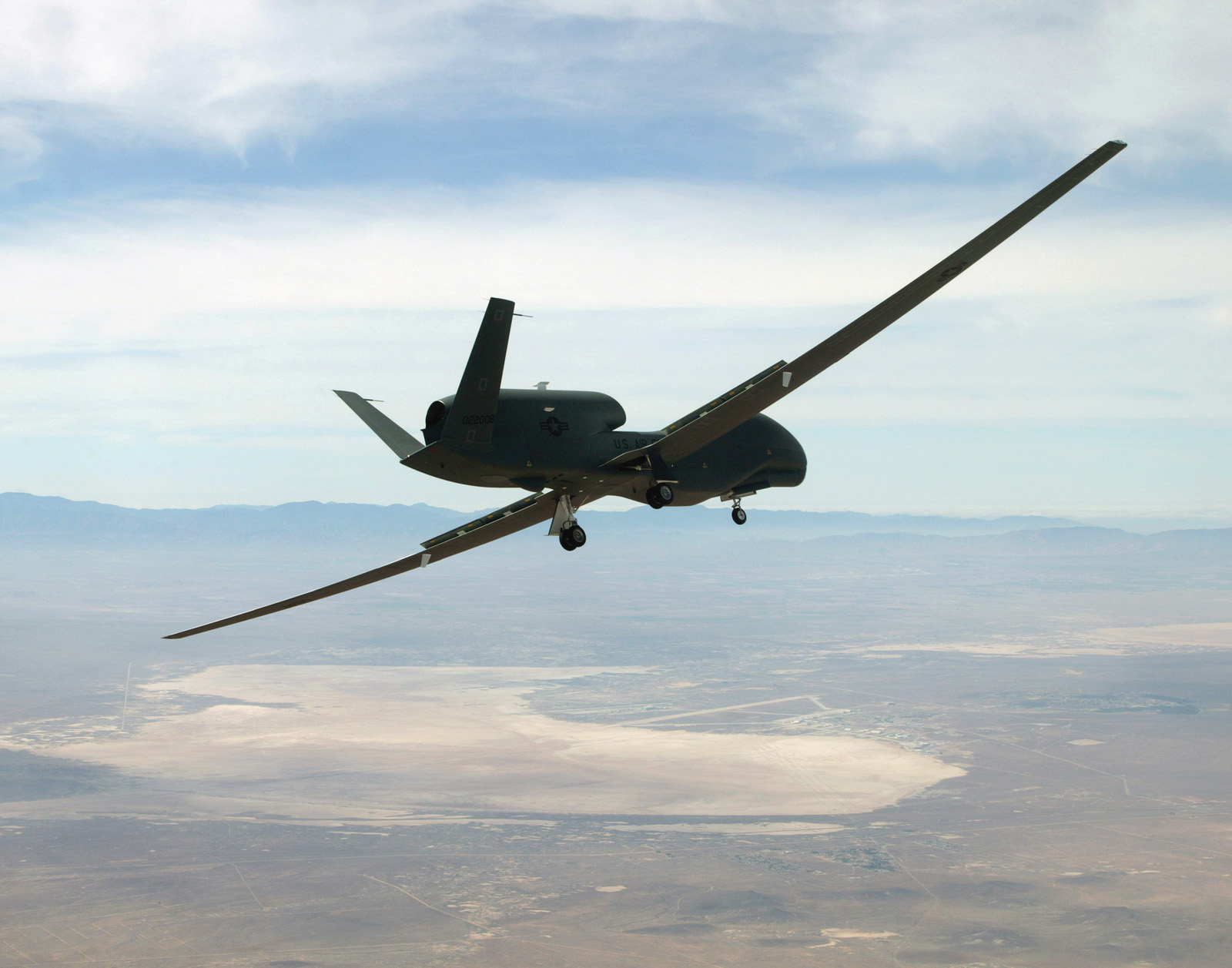By Henry M. Holden
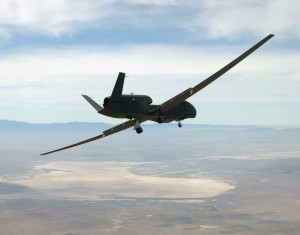
A U.S. Air Force RQ-4A Global Hawk high-altitude, long-endurance UAS turns over Roger Dry Lakebed to make a landing at Edwards Air Force Base (AFB), Calif. This is one UAS that officers with no flight training will learn to fly.
On Jan. 5, 2009, the United States Air Force will launch a revolutionary and ambitious program. For the first time, officers with no flight training will learn to fly Unmanned Aerial Systems (UAS) into battle.
The dramatic shift in policy comes as the USAF seeks to meet the increasing demand for aerial surveillance assets in Iraq and Afghanistan. In order to meet the challenge head on, the Air Force looked at innovative ways to give the ground fighters what they need to get the job done. Fully half of the aircraft the Air Force will be buying in the future are going be unmanned.
“Initially 10 officers, most of whom have no flying experience, will be selected for what has been termed a ‘beta test,'” said Brig. Gen. Carlton D. Everhart of the Air Force’s Air Education and Training Command (AETC). “These officers will be the pioneers for what is hoped will become a brand new career field for the operators of Unmanned Aerial Systems.”
Selection standards for this initial cadre of UAS operators will be on a par with those of pilot candidates.
“While some physiological requirements may be relaxed compared to those for pilots of manned aircraft, the Air Force is maintaining the same eyesight requirements, including depth perception and color vision,” Everhart said. “Many of the same academic requirements are being maintained, including passing the Test of Basic Aviation Skills and Air Force Officer Qualification Test, as these have been shown to predict success in the air.”
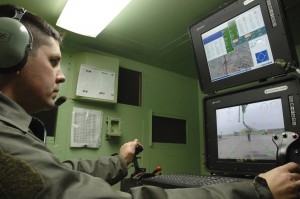
An Air Force pilot monitors and flies an MQ-1 Predator unmanned aerial system at Ali Air Base, Iraq. The Predators are deployed from the 15th Reconnaissance Squadron, Creech Air Force Base, Nev.
Training for these officers will begin much the same way as those entering the regular USAF Undergraduate Pilot Training (UPT) pipeline. The class will undergo initial flight screening to teach the students “air sense” and the emergency procedures needed to advance to flying more sophisticated machines.
“Teaching air sense is the biggest open question,” said Everhart. “How long does it take to teach air sense? How long does it take students to grasp the concepts? These are all areas of concern to the Air Force.”
A multi-step program
The next stop for the program is Randolph Air Force Base (AFB) in Oklahoma, where the students will undergo academic and simulator training for instrument flight, air navigation, holding patterns, and most importantly de-conflicting with other aircraft traffic. The students will also learn the finer points of operating under Air Force air tasking orders when flying into a combat zone, and crew resource management used to coordinate with the sensor operator.
The big difference between the regular UPT course and the UAS operator course is that the UAS operators will not actually fly the T-6 during their training. All the flying is done in a simulator.
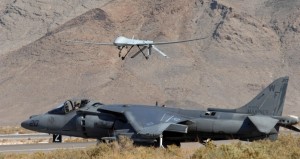
A U.S. Marine Corps AV-8B Harrier, assigned to Marine Attack Squadron 51, waits as an MQ-1 Predator UAS passes by at Creech Air Force Base, Nev. Airmen of the 11th Reconnaissance Squadron teamed with the Marines for a joint training exercise at the base.
The final step before entering flight training on a Predator UAS is the Joint Air Ground Operations Group. Here, the students will learn to coordinate with the ground forces they are supporting. The school not only teaches pilots the details of close air support and air interdiction, but also serves as the training unit for the joint terminal attack controllers who clear the pilots to fire their weapons during such missions. Everhart explained that this phase of the training is critical in developing the students’ “air sense.”
The final phase of the new training is held at the MQ-1 Predator Formal Training Unit (FTU) at Creech AFB, Nevada. At the FTU, students attend the beta course where they learn to fly and fight with the MQ-1 Predators. The beta course is designed for new pilots who have no experience in any major weapons system to learn the basics of flying an aircraft in combat.
Once the beta-course is completed, the students are basic aircraft qualified. However, they must still complete the mission qualification course with their operational squadron in order to be considered UAS combat pilots. If the students prove to be successful, the Air Force will make a decision about creating a permanent new career field for UAS operators. The AETC also hopes to eventually create an FTU for every individual UAS classification. Officials caution, however, that while they expect the new training program to succeed, the “success of the beta testing is not a foregone conclusion.”
Winged pilots supplement the program
Until the fate of the dedicated UAS pipeline is decided, the USAF embarked on a program this November to take up to 100 new UPT graduates each year and send them directly to a Predator, Global Hawk or Reaper UAS. Unlike the participants of the beta test program who will be initially restricted to the Predator aircraft, the UPT graduates will be allowed to fly any UAS in the inventory to which they are assigned. Also unlike those graduating from the beta test program, the UPT graduates will not remain in the unmanned system business permanently.
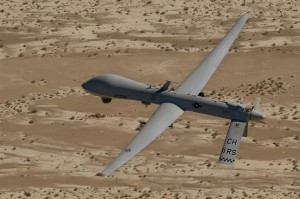
The final phase of the new training is held at the MQ-1 Predator Formal Training Unit (FTU) at Creech AFB, Nev., where the students will learn to fly and fight with the MQ-1 Predators.
“The Chief (of Staff) has made the commitment that these pilots will return to flying a manned weapons system after a three-year tour flying a UAS,” Everhart said. Those pilots who were involuntarily reassigned to flying combat drones under the Transformational Aircrew Management Initiative 21 program may also eventually return to flying manned aircraft as circumstances change.
UPT graduates who are assigned to flying UAS are sitting on the edge of the Air Force’s future. Everhart explains that not only do these pilots “get into the fight” immediately, they gain a breadth and depth of experience which will be of value later on in their careers, and that same experience will be fully applicable to manned weapons systems.
“In Iraq or Afghanistan, when you get a call for a close air support platform, the most requested platform is a UAS,” Everhart said. “With a UAS on station, you can watch and direct troop movements, attacking the enemy directly. There is a lot of capability there—the future is very bright.”
While the ultimate fate of the dedicated UAS operator career field has yet to be decided, officials said they are optimistic, pointing out that the USAF only accepts highly qualified personnel into the ranks. While it has yet to be determined if the UAS operators will be “rated” (i.e., part of the elite Air Force fraternity of aviators), Everhart believes that it will happen, adding that, “These guys are real warriors.”
“Should the UAS operators eventually be considered rated officers, that could potentially change the face of the Air Force,” Everhart said.

A U.S. Air Force RQ-4A Global Hawk high-altitude, long-endurance UAS turns over Roger Dry Lakebed to make a landing at Edwards Air Force Base (AFB), Calif. This is one UAS that officers with no flight training will learn to fly.











